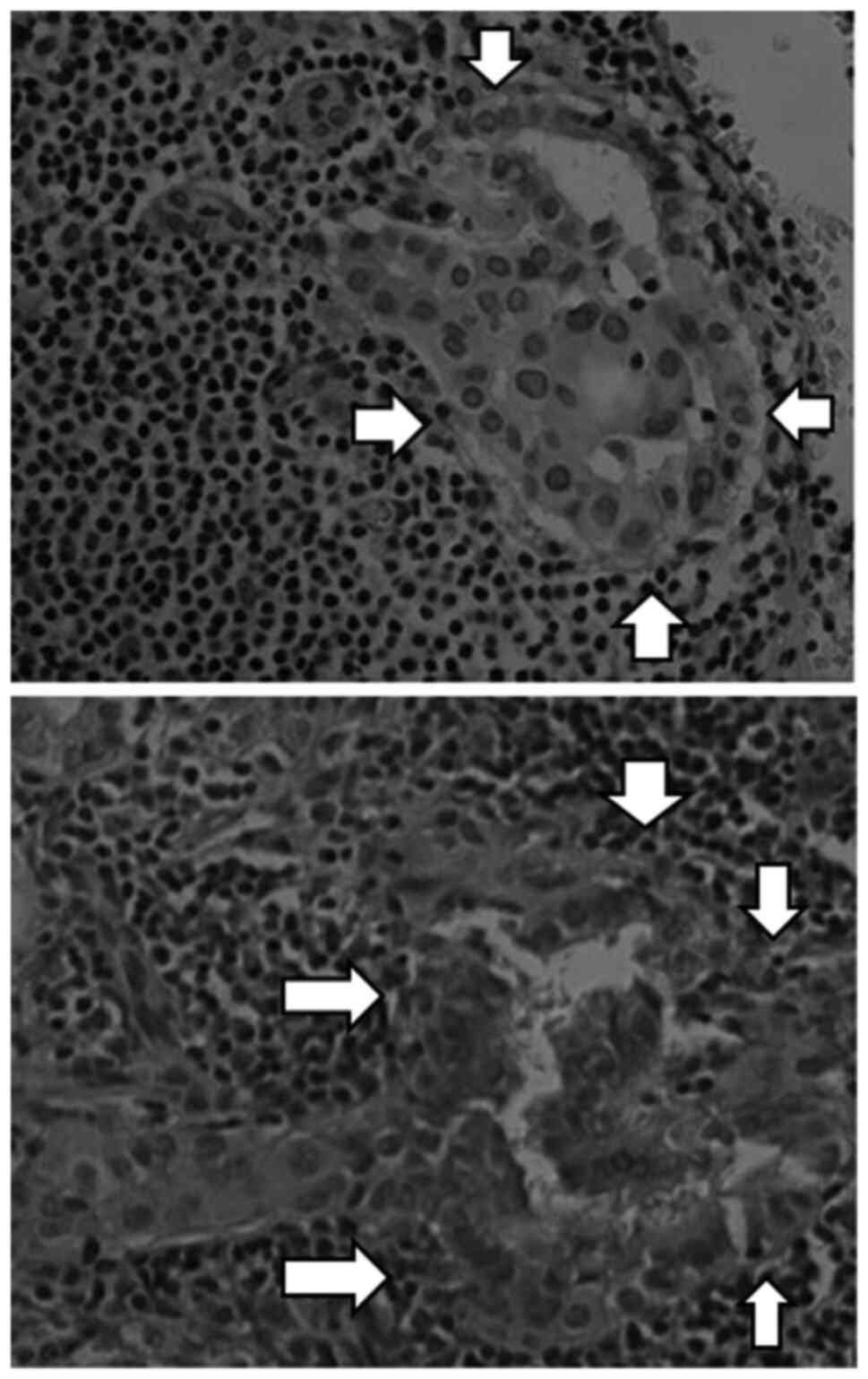Spandidos Publications style
Karvounis E, Kechagias A, Kappas I, Ioakimidou C and Fillipidis T: Papillary thyroid carcinoma micro‑deposits in cervical lymph nodes without intra‑thyroid malignancy: A comment in consideration of the latest American Thyroid Association guidelines. Mol Clin Oncol 15: 164, 2021.
APA
Karvounis, E., Kechagias, A., Kappas, I., Ioakimidou, C., & Fillipidis, T. (2021). Papillary thyroid carcinoma micro‑deposits in cervical lymph nodes without intra‑thyroid malignancy: A comment in consideration of the latest American Thyroid Association guidelines. Molecular and Clinical Oncology, 15, 164. https://doi.org/10.3892/mco.2021.2326
MLA
Karvounis, E., Kechagias, A., Kappas, I., Ioakimidou, C., Fillipidis, T."Papillary thyroid carcinoma micro‑deposits in cervical lymph nodes without intra‑thyroid malignancy: A comment in consideration of the latest American Thyroid Association guidelines". Molecular and Clinical Oncology 15.2 (2021): 164.
Chicago
Karvounis, E., Kechagias, A., Kappas, I., Ioakimidou, C., Fillipidis, T."Papillary thyroid carcinoma micro‑deposits in cervical lymph nodes without intra‑thyroid malignancy: A comment in consideration of the latest American Thyroid Association guidelines". Molecular and Clinical Oncology 15, no. 2 (2021): 164. https://doi.org/10.3892/mco.2021.2326















